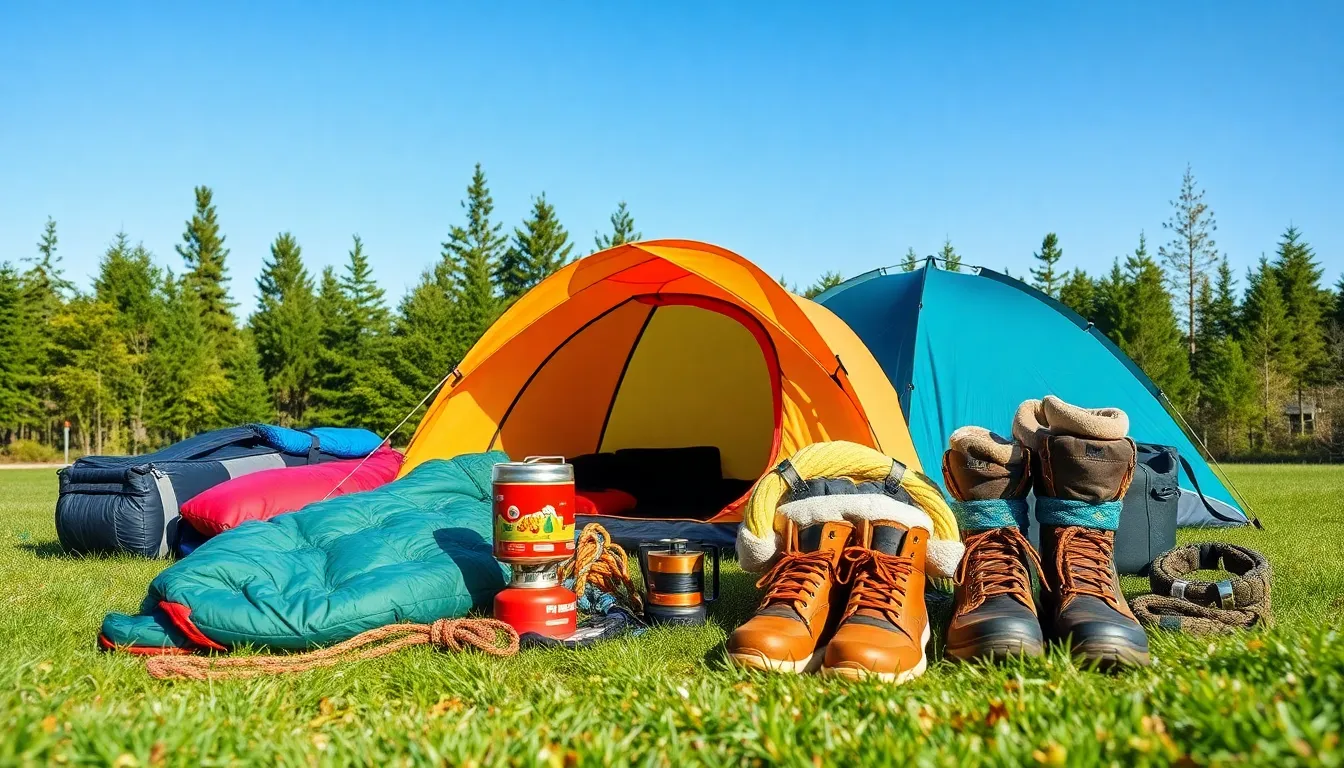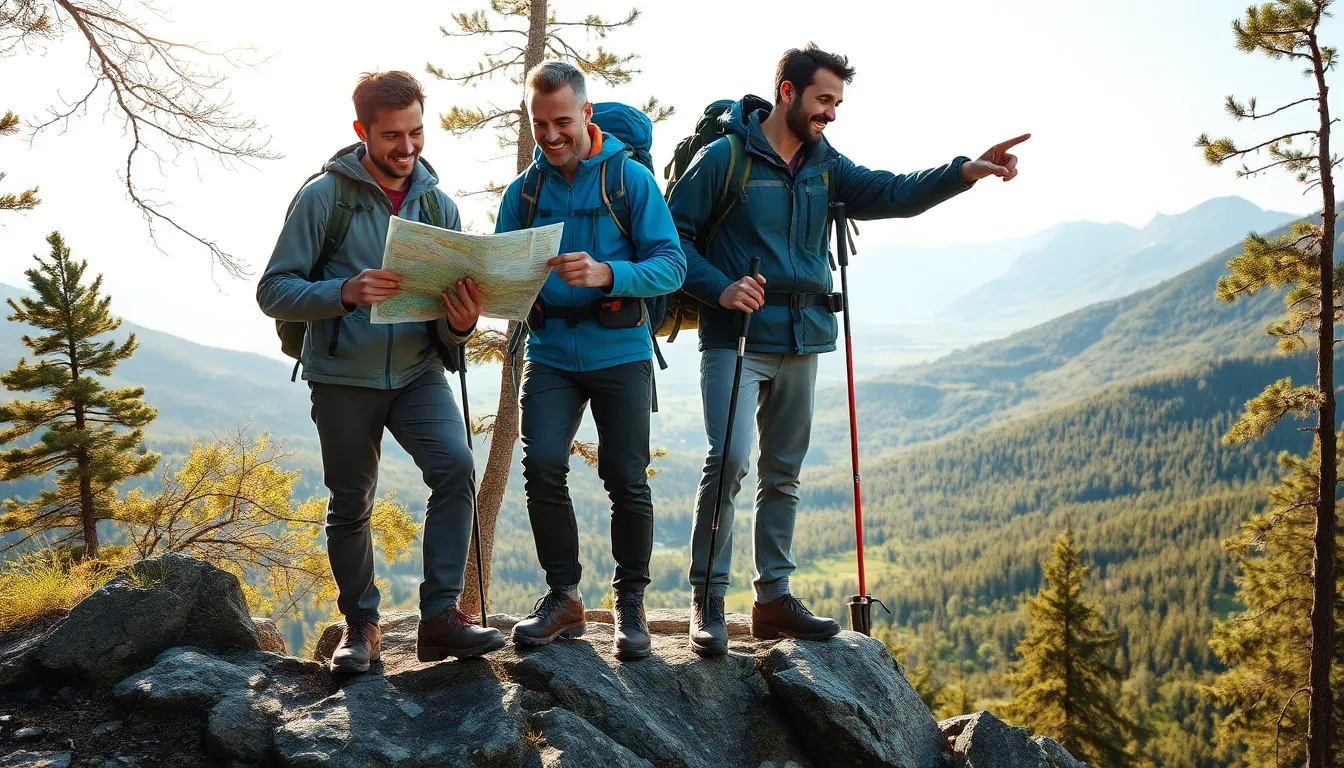As outdoor adventures gain popularity, the right gear can make or break an experience. From hiking and camping to climbing and kayaking, having reliable equipment is essential for safety and enjoyment. With countless products flooding the market, finding the best gear can feel overwhelming. That’s where outdoor gear reviews come in.
These reviews not only highlight the pros and cons of various items but also provide insights from real users who’ve tested them in the field. Whether it’s a durable tent, a lightweight backpack, or high-performance footwear, understanding what works best can elevate any outdoor excursion. Dive into the world of outdoor gear reviews and discover the tools that will help turn every adventure into a memorable journey.
Table of Contents
ToggleOverview of Outdoor Gear Reviews
Outdoor gear reviews serve as essential resources for adventurers seeking the right equipment. These reviews offer detailed evaluations of various products, emphasizing performance, durability, and user experience. They highlight crucial features and limitations, enabling users to make informed purchasing decisions.
Key aspects covered in outdoor gear reviews include:
- Performance: Reviews assess how well a product performs during actual outdoor activities. This includes factors like comfort, functionality, and reliability under specific conditions.
- Durability: Reviews evaluate the wear and tear a product endures over time, ensuring longevity and consistent performance during multiple excursions.
- User Experience: Reviews incorporate feedback from those who have used the products firsthand, providing insights into usability and practicality in real-world scenarios.
Comparing products side by side enhances visibility into market options, allowing users to weigh advantages and disadvantages effectively. Many reviews also feature rating systems or scoring that simplifies the decision-making process. Ultimately, outdoor gear reviews act as a guide, giving adventurers confidence in their gear choices.
Types of Outdoor Gear

Various types of outdoor gear cater to different adventures. Understanding the specific equipment available helps adventurers enhance their experiences.
Camping Equipment
Camping equipment includes tents, sleeping bags, and cooking gear. Tents provide shelter against elements; options range from lightweight backpacking tents to larger family models. Sleeping bags offer insulation levels varying from summer to winter, ensuring comfort during different temperatures. Cooking gear comprises portable stoves, cookware, and utensils, aiding meal preparation. When choosing camping equipment, consider weight, durability, and size.
Hiking Gear
Hiking gear involves footwear, backpacks, and hydration systems. Footwear, such as hiking boots and shoes, offers traction and support; options include waterproof and breathable materials. Backpacks vary in size and capacity, with features like hydration reservoirs and organizational pockets. Hydration systems ensure proper water consumption, including bottles and reservoirs for easy access while on the trail. Factors like comfort and fit play crucial roles in selecting hiking gear.
Climbing Gear
Climbing gear consists of ropes, harnesses, and protection devices. Ropes are designed for specific climbing styles, such as dynamic ropes for sport climbing and static ropes for rappelling. Harnesses provide secure attachment points for safety and comfort, with options that include adjustable and lightweight designs. Protection devices, like carabiners and quickdraws, serve as essential tools for securing climbers to the rock. Prioritizing safety ratings and usability enhances the climbing experience.
Criteria for Reviewing Outdoor Gear
Evaluating outdoor gear involves several critical criteria. These factors ensure that products meet the demands of various outdoor activities and help users make informed choices.
Performance
Performance measures how well a product executes its intended function during outdoor activities. Evaluators assess the effectiveness of gear under various conditions, such as wet, dry, cold, or hot environments. They analyze features such as grip on hiking boots, responsiveness in climbing gear, and stability in tents. User reviews often provide insights into real-world performance, highlighting how products hold up during strenuous use. Additionally, testing often includes comparing similar items across different brands to determine which offers superior functionality.
Durability
Durability indicates how long gear withstands wear and tear from regular use in challenging environments. Reviewers examine materials, construction techniques, and the overall design of each product. Items made from high-quality, abrasion-resistant materials tend to perform better over time. Evaluators also consider warranty information and manufacturer reputation regarding product longevity. User feedback helps identify any common issues or failures that arise after prolonged use, offering valuable insights into durability.
Value for Money
Value for money assesses whether a product delivers quality relative to its price. Reviewers gauge functionality against price points to determine if a particular item is worth the investment. They consider long-term costs, including potential repairs or replacements, in their evaluations. Comparisons also help illustrate the differences in pricing among similar products, clarifying why some items command higher prices than others. Consumer ratings often reflect satisfaction levels, adding context to value assessments based on personal experiences.
Popular Outdoor Gear Brands
Numerous brands stand out in the outdoor gear market, each offering unique products tailored to various activities.
- The North Face: Known for high-performance outerwear, tents, and backpacks, The North Face combines innovation with sustainability. Its products undergo rigorous testing to ensure reliability in extreme conditions.
- REI Co-op: REI offers a wide range of outdoor gear, from climbing equipment to camping essentials. The brand’s commitment to member satisfaction and responsible sourcing makes its gear a popular choice.
- Patagonia: Emphasizing environmental responsibility, Patagonia provides durable clothing and gear. Its commitment to fair labor practices and sustainable materials resonates with eco-conscious adventurers.
- Columbia Sportswear: Columbia focuses on affordable outdoor apparel and footwear, featuring technologies like Omni-Tech for waterproofing and Omni-Heat for insulation. Its products appeal to recreational outdoor enthusiasts.
- Mountain Hardwear: Specializing in technical gear for climbing and hiking, Mountain Hardwear prioritizes performance and quality. Its equipment is designed to withstand the rigors of outdoor adventures.
- Black Diamond: Black Diamond excels in climbing gear, offering a variety of harnesses, ropes, and protective equipment. The brand’s focus on engineering and innovation enhances safety and performance for climbers.
- MSR (Mountain Safety Research): MSR provides dependable cooking gear and water filtration systems for campers and backpackers. Its products are engineered to endure harsh environments and simplify outdoor cooking.
- Osprey: Osprey focuses on backpacks designed for comfort and fit. Their tailored suspension systems cater to various outdoor activities, ensuring support during extended adventures.
These prominent brands uphold high standards of quality, performance, and user satisfaction, making them favorites among outdoor enthusiasts.
Recent Innovations in Outdoor Gear
Outdoor gear continually evolves, driven by advancements in technology and materials. These innovations enhance performance, comfort, and usability for outdoor enthusiasts.
Lightweight Materials
Manufacturers incorporate lightweight materials like Dyneema and advanced synthetic fabrics. These components reduce pack weight while maintaining strength and durability. For example, tents crafted from these materials provide reliable shelter without added bulk.
Smart Gear Technology
Smart gear integrates technology to monitor performance and enhance safety. GPS-enabled devices track location, while hydration packs feature built-in sensors to remind users to stay hydrated. These innovations increase user awareness and overall adventure safety.
Sustainable Practices
Sustainability in outdoor gear reflects an increasing demand for environmentally friendly practices. Brands focus on recycled materials and eco-conscious manufacturing processes. For instance, Patagonia’s recycled polyester jackets reduce plastic waste and minimize environmental impact.
Modular Systems
Modular systems allow users to customize gear according to specific needs. Backpack systems, featuring detachable compartments, enable adaptability for varying trip lengths or activities. This versatility promotes efficiency in packing and enhances organization.
Enhanced Insulation
Innovative insulation technologies, such as Aerogel and new synthetic insulations, improve warmth without excess weight. These materials provide optimal thermal efficiency in extreme conditions, catering to explorers in cold environments.
Advanced Footwear
Footwear designs now emphasize support and comfort through biomechanical fit and cushioning technologies. Brands employ responsive midsoles and adaptive uppers to ensure that hiking boots provide a secure fit for diverse terrains.
Ultralight Camping Gear
Camping gear has transitioned toward ultralight options, enabling longer hikes and greater mobility. Items like inflatable sleeping pads and minimalist cook systems reduce overall weight, making them ideal for backpackers focused on efficiency.
Versatile Clothing
Clothing innovations focus on multi-functionality. Many garments now offer features such as moisture-wicking, quick-drying, and UV protection. These enhancements ensure comfort across varying weather conditions while also simplifying packing.
These innovations reflect a commitment to enhancing outdoor experiences, providing adventurers with gear designed for performance, safety, and sustainability.
Choosing the right outdoor gear is essential for maximizing adventure experiences. With countless options available it’s crucial for adventurers to rely on thorough reviews that highlight product performance and user satisfaction. By understanding the strengths and weaknesses of various gear types individuals can make informed choices that enhance safety and enjoyment in the great outdoors.
As technology continues to evolve so do the innovations in outdoor equipment. This ongoing progress ensures that adventurers have access to gear that not only meets their needs but also aligns with sustainable practices. Investing time in research and reviews ultimately leads to better outdoor experiences and a deeper connection with nature.





